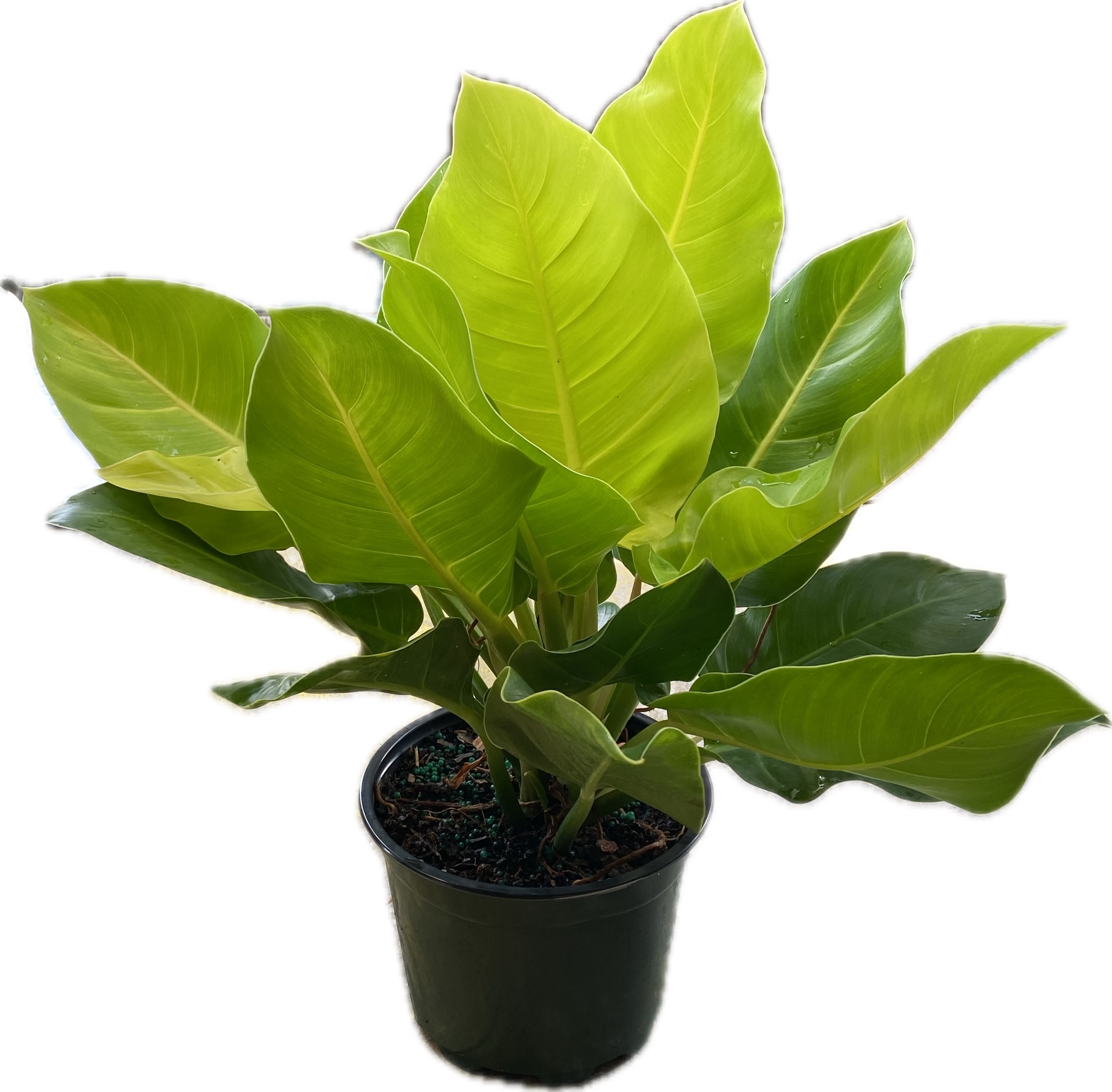
The Moonlight Philodendron (Philodendron ‘Moonlight’) is a popular houseplant known for its striking, glossy, lime-green leaves that add a vibrant touch to any indoor space. It’s a relatively easy plant to care for, making it a great choice for both novice and experienced plant enthusiasts.
We have Moonlight Philodendron are available in 4”, 6”, 8”, 10”, and 14” as well as other varieties of philodendron.
Here’s a comprehensive guide to keeping your Moonlight Philodendron healthy and thriving:
Climate and Location
Temperature: Moonlight Philodendrons prefer warm temperatures, ideally between 65-80°F. They are sensitive to cold and should be protected from temperatures below 50°F.
Light: They thrive in bright, indirect light but can tolerate lower light conditions. Avoid direct sunlight, as it can cause leaf scorch. In low light, the plant may grow more slowly and have less vibrant foliage.
Soil Requirements
Type: Use a well-draining potting mix. A standard houseplant mix or a blend of peat, perlite, and orchid bark works well. Proper drainage is crucial to prevent root rot.
pH: Moonlight Philodendrons prefer slightly acidic to neutral soil, around pH 6.0 to 7.0.
Watering
Frequency: Water when the top inch of soil feels dry. Overwatering can lead to root rot, so ensure the plant is not sitting in water. During the growing season (spring and summer), the plant may require more frequent watering compared to the fall and winter.
Method: Water thoroughly until excess water drains out of the bottom of the pot. Ensure the pot has drainage holes to facilitate this.
Fertilizing
Type: Use a balanced, water-soluble fertilizer or one formulated for houseplants.
Frequency: Feed every 4-6 weeks during the growing season (spring and summer). Reduce feeding in the winter when the plant’s growth slows down.
Pruning
Purpose: Pruning helps maintain the plant’s shape, remove any dead or yellowing leaves, and encourage bushier growth.
Method: Trim back any leggy or overgrown stems. You can also cut back the plant to promote a fuller appearance and to control its size.
Pests and Diseases
Pests: Watch out for common pests such as spider mites, mealybugs, and aphids. Regularly inspect the plant and treat infestations with insecticidal soap or neem oil.
Diseases: Fungal and bacterial issues can occur, especially if the plant is overwatered. Ensure good air circulation and avoid watering the leaves to prevent mold and mildew.
Repotting
Frequency: Repot every 1-2 years or when the plant becomes root-bound or outgrows its container. This also gives you a chance to refresh the soil and check the root system.
Method: Choose a pot that is 1-2 inches larger in diameter than the current one. Gently remove the plant from its old pot, loosen the roots if necessary, and place it in the new pot with fresh soil.
Special Considerations
Toxicity: Like many Philodendrons, the Moonlight Philodendron is toxic if ingested, due to the presence of calcium oxalate crystals. Keep it out of reach of pets and small children.
Support: This plant typically grows as a climbing or trailing plant. You might need to provide a moss pole or trellis if you want it to climb.
Appearance and Growth
Appearance: The Moonlight Philodendron is known for its bright, chartreuse to lime-green leaves that can brighten up any room. The leaves are typically heart-shaped and have a glossy texture.
Growth: It can be grown as a trailing plant in hanging baskets or as a climbing plant with support. It tends to grow quickly and can reach up to 3 feet or more in length.
With its stunning foliage and relatively low-maintenance needs, the Moonlight Philodendron can be a standout addition to your indoor plant collection. Regular care and attention will help it flourish and continue to bring a fresh, vibrant look to your space.
If you have any questions, feel free to call us at (352) 735-8350 or come by the nursery. Our hours are Monday-Friday 8-5 p.m.
